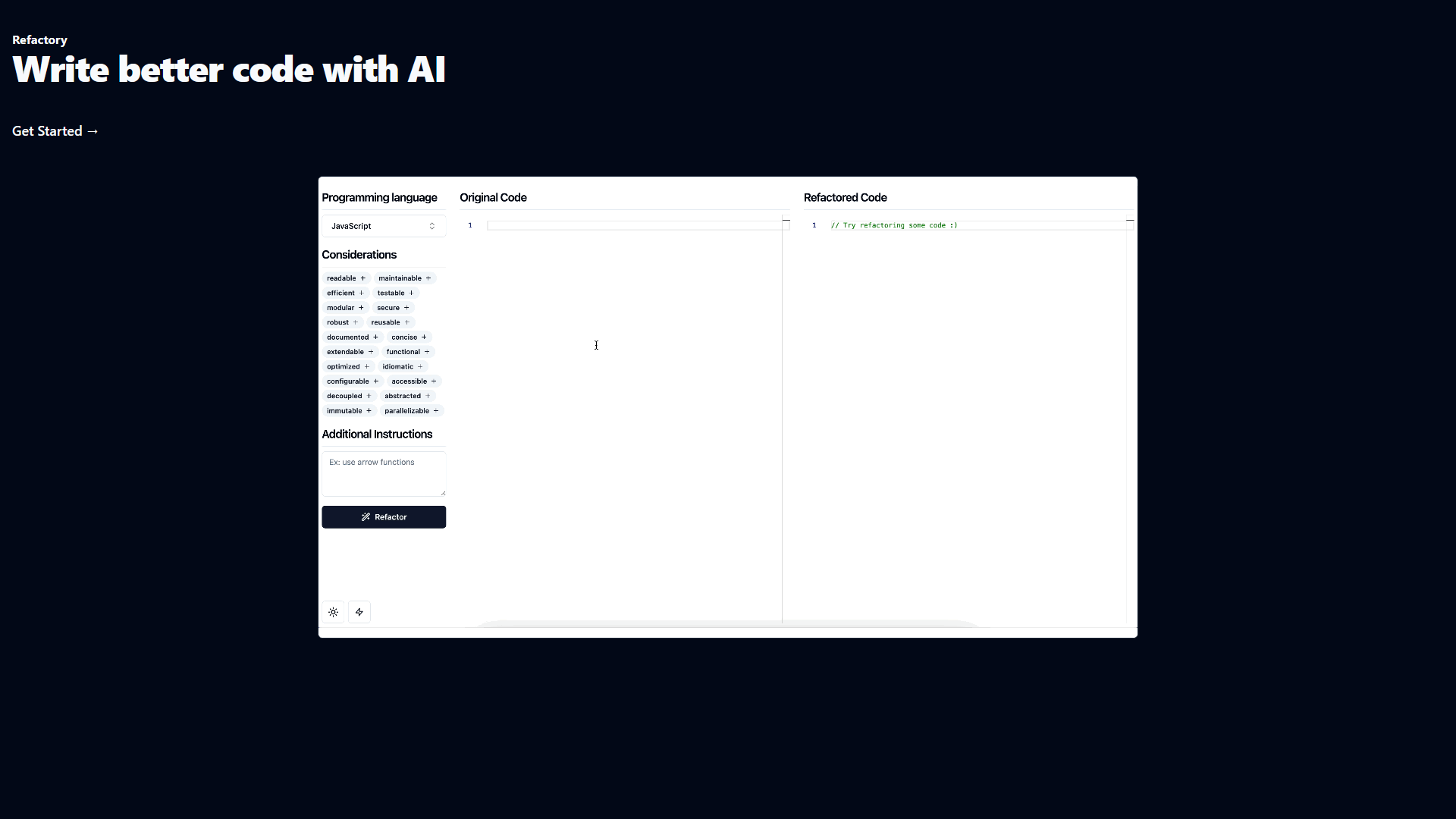Overview
Refactory is a transformative AI tool that revolutionizes the way developers write and manage code. By leveraging advanced AI algorithms, it provides intelligent suggestions and automated improvements to elevate coding practices and ensure high standards of quality and efficiency.
Incorporating Refactory into your development workflow simplifies the coding process, making it accessible for both beginners and seasoned programmers. The tool’s user-friendly interface ensures an easy learning curve, while its AI capabilities work diligently in the background, offering real-time feedback to enhance code readability, performance, and maintainability.
Refactory is designed to be an indispensable asset for software developers, with its ability to automatically refactor code. This reduces the likelihood of errors and streamlines workflows, allowing developers to focus on building innovative solutions. Harnessing the power of AI, Refactory supports continuous improvement of codebases, making it a must-have for modern development environments.
Key features
- AI-powered code suggestions: Refactory leverages its advanced AI algorithms to offer intelligent code suggestions, ensuring that developers can write cleaner and more efficient code without much manual intervention.
- Real-time feedback: The tool provides immediate feedback on code quality and performance, helping developers to quickly identify areas for improvement and make necessary adjustments on the fly.
- Improved code readability: By automatically refactoring code, Refactory enhances the readability and maintainability of the codebase, making it easier for teams to understand and collaborate on projects.
- Seamless workflow integration: Refactory is designed to easily integrate into existing development workflows, allowing developers to take advantage of its features without disrupting their usual processes.
- Enhanced productivity: With its intelligent suggestions and automated improvements, Refactory significantly boosts productivity, allowing developers to focus on critical tasks without getting bogged down by code quality issues.
 Pros
Pros
- Boosts coding efficiency: Refactory significantly improves coding efficiency by providing automated suggestions and improvements, reducing the need for manual refactoring.
- Enhances code quality: The tool focuses on maintaining high standards of code quality, ensuring that the code is both efficient and readable across all projects.
- Simplifies development process: By integrating seamlessly into existing workflows, Refactory simplifies the overall development process, making it easier for developers to maintain a standard of excellence in their code.
- Supports continuous improvement: Refactory's AI capabilities promote continuous improvement of codebases, helping developers to ensure that their code remains current and high-quality over time.
- User-friendly interface: The interface is designed for ease of use, ensuring that both novice and experienced developers can quickly get up to speed with its features.
 Cons
Cons
- Limited advanced customization: Refactory might not offer extensive options for advanced customization, which may be a limitation for users looking for tailored solutions.
- Requires initial setup time: Setting up Refactory in an existing workflow may require some initial time investment to ensure optimal integration.
- Not suitable for non-coders: As a coding tool, Refactory is not intended for non-coders, limiting its usability for people outside of the development field.
- May not cover niche languages: The tool may not support all programming languages, which could be a drawback for developers working with less common or niche languages.
- Dependency on consistent updates: The effectiveness of Refactory depends on consistent updates to maintain compatibility with the latest development environments.
















